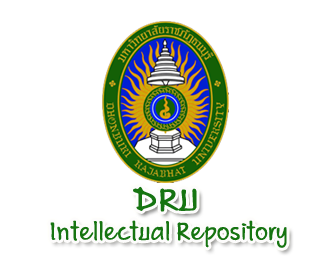Please use this identifier to cite or link to this item:
http://hdl.handle.net/123456789/1899Full metadata record
| DC Field | Value | Language |
|---|---|---|
| dc.contributor.author | Hao, Zhang | - |
| dc.date.accessioned | 2024-07-09T08:24:06Z | - |
| dc.date.available | 2024-07-09T08:24:06Z | - |
| dc.date.issued | 2023 | - |
| dc.identifier.uri | http://hdl.handle.net/123456789/1899 | - |
| dc.description.abstract | The objectives of this research were as follows: 1) to study the current conditions, problems, and obstacles faced in managing green spaces during the COVID-19 pandemic in Suzhou City; 2) to investigate the best practices in maintaining green spaces within the community throughout the COVID-19 pandemic period; and 3) to establish guidelines for innovative management aimed at sustaining green spaces within the community during the COVID-19 pandemic period in Suzhou City. The qualitative research methodology involved document analysis, interviews, and site surveys for data collection. The key informants included manager from Suzhou New Area Shishan Street Greening Municipal Co., Ltd., 12 experts in community green maintenance, and a Thai expert specializing in innovation management, selected through purposive sampling. Data collection utilized interview guidelines, and thematic analysis was employed for data interpretation. The research findings have revealed that: 1) managing green spaces in Suzhou City during the COVID-19 pandemic was a challenging task. The restrictions on movement, shortage of labor, and increased visitor flow in community parks all contributed to difficulties in maintaining green spaces effectively. Additionally, the pandemic affected the morale and efficiency of workers, which further impacted the quality of green space management. Addressing these issues and implementing effective measures to ensure proper workforce allocation, safety protocols, and support for workers' well-being were crucial steps in overcoming the obstacles and successfully managing green spaces during those challenging times; 2) the best practices in maintaining green spaces in the community during the COVID-19 pandemic period included establishing and improving prevention and emergency plans, ensuring adequate reserves of epidemic prevention materials, strengthening emergency response capabilities, implementing a real-name system and detailed labor archive management, controlling labor activity trajectory with point-to-point management, enhancing epidemic prevention awareness among green maintenance workers, and promptly addressing employees' ideological issues while providing necessary support to reduce life pressures and concerns, ensuring a peaceful work environment; and 3) the guidelines for management innovation during the COVID-19 pandemic in Suzhou City focused on establishing a flexible and scientific greening and maintenance system, improving technical expertise through a professional team, and enhancing targeted handling of special events. These management innovations prioritized high-quality garden management while respecting ecological laws, ensuring the sustainability and success of community greening efforts amidst the challenges posed by the pandemic. | en_US |
| dc.language.iso | other | en_US |
| dc.publisher | Dhonburi Rajabhat University | en_US |
| dc.subject | Management Innovation | en_US |
| dc.subject | Community Green Spaces | en_US |
| dc.subject | COVID-19 Pandemic | en_US |
| dc.subject | Dhonburi Rajabhat University | en_US |
| dc.title | Management Innovation for Maintaining Green Spaces in the Community during the COVID-19 Pandemic in Suzhou City | en_US |
| dc.type | Thesis | en_US |
| Appears in Collections: | Thesis Dhonburi Rajabhat University - วิทยานิพนธ์ปริญญาโท มหาวิทยาลัยราชภัฏธนบุรี | |
Files in This Item:
| File | Description | Size | Format | |
|---|---|---|---|---|
| Title 1.pdf | Title 1 | 129.92 kB | Adobe PDF | View/Open |
| Title 2.pdf | Title 2 | 51.32 kB | Adobe PDF | View/Open |
| Abstract.pdf | Abstract | 152.55 kB | Adobe PDF | View/Open |
| Acknowledgement.pdf | Acknowledgement | 54.27 kB | Adobe PDF | View/Open |
| Table of content.pdf | Table of content | 124.75 kB | Adobe PDF | View/Open |
| Unit 1.pdf | Unit 1 | 298.81 kB | Adobe PDF | View/Open |
| Unit 2.pdf | Unit 2 | 306.75 kB | Adobe PDF | View/Open |
| Unit 3.pdf | Unit 3 | 251.03 kB | Adobe PDF | View/Open |
| Unit 4.pdf | Unit 4 | 963.67 kB | Adobe PDF | View/Open |
| Unit 5.pdf | Unit 5 | 731.16 kB | Adobe PDF | View/Open |
| Bib.pdf | Bib | 360.55 kB | Adobe PDF | View/Open |
| Appendix.pdf | Appendix | 1.59 MB | Adobe PDF | View/Open |
Items in DSpace are protected by copyright, with all rights reserved, unless otherwise indicated.
